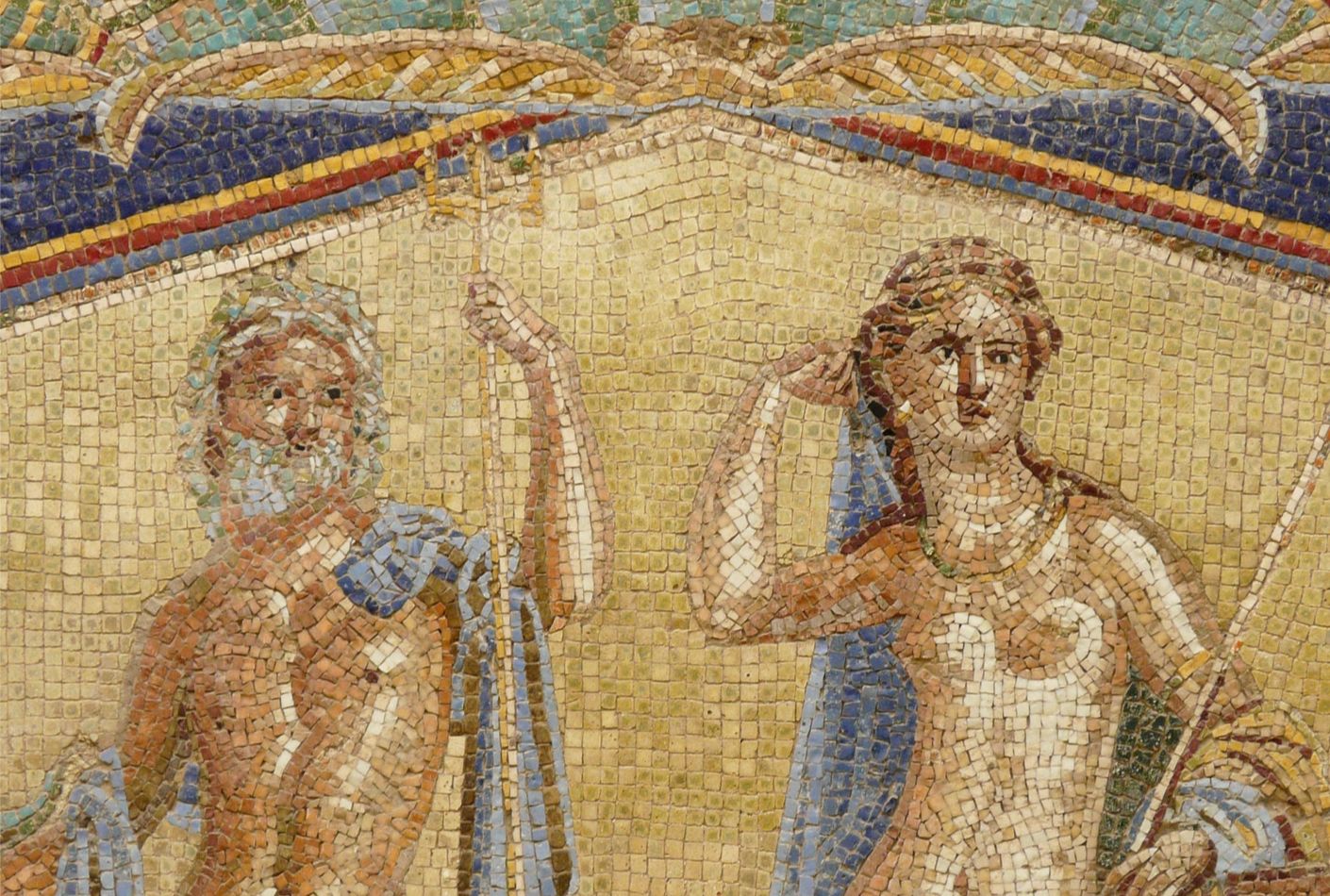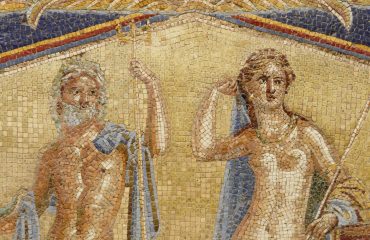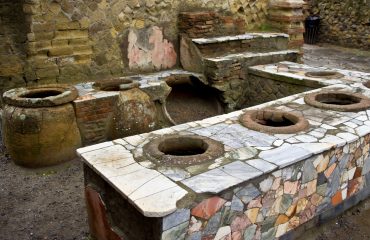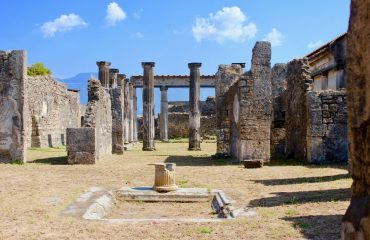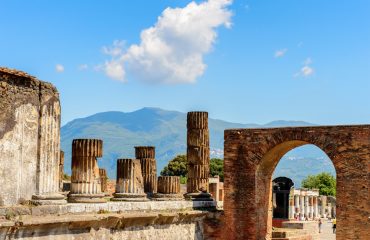JIGSAW PIECES… REASSEMBLED
Day trip to Pompeii & Herculaneum
- Explore two of Italy’s most mind-blowing archaeological sites and learn how a natural disaster in 79 AD has allowed the contemporary world to access priceless historical evidence
- Thread your way through the streets and squares of Pompeii, past theatres and temples, pausing at the very earliest known Italian fast food establishment
- Get a feel for what an ancient Roman resort town might have looked like as you walk through the ruins of Herculaneum
-
Category
-
Hobbies & Interests
-
DurationFull day
-
Destination
JIGSAW PIECES… REASSEMBLED
Day trip to Pompeii & Herculaneum
No other archaeological parks anywhere in the world quite match up to those of Pompeii and Herculaneum, both inscribed in the list of UNESCO’s World Heritage Sites for the outstanding quality and significance of the discoveries unearthed here. The thrill of exploring these ancient settlements, preserved for us by the eruption that buried them in volcanic ash and mud on that long-ago, fateful August 24th in the year 79 AD is an utterly incomparable experience.
Your guide will take you on a carefully planned trail through both these incredible towns and explain the purpose and function of the foundations and buildings you will see along the way. You will also find out about the lifestyle and customs of those who inhabited them, the techniques used to uncover and interpret findings made here and the evidence that has been pieced together to give us such a stunningly vivid picture of Roman Campania. Although much excavation work remains to be done and conservation presents the curators with a massive challenge, what you can still see and touch here is simply astounding.
Your journey back in time begins as you access the excavations of Pompeii through the city gate of Porta Marina. Once inside, follow your guide through the ruins of the ancient city as she helps you conjure up visions of yesteryear’s inhabitants going about their daily chores. Can you imagine what everyday scenes might have looked like here, in this once thriving agricultural and trading centre, peacefully perched in the shadow of mighty Mount Vesuvius, whose citizens were unaware of the imminent disaster? How did Pompeii’s 15,000 residents spend their time 2,000 years ago? What were their occupations, beliefs and traditions? What did they eat? Which leisure activities did they enjoy? The answers to these and many more questions are securely safeguarded within Pompeii’s silent walls, jigsaw pieces in a tantalizing, real life puzzle just waiting to be reassembled – with a little support from your guide.
When you stroll along the well-planned streets, you’ll notice the road building skills that were needed to set the large paving blocks in place and the high kerbs and stepping stones conveniently arranged to allow people to cross without getting their feet wet and dirty. This is just one small but significant example of the ingenuity of the ancient Romans in the fields of engineering and urban planning. Their achievements remained unequalled for centuries and their remarkable legacy continues to guide us to this day. Our culinary habits, pastimes and vices too may well have their roots here. From fast foods to spas, from red light districts to gambling the ancient Romans of Pompeii were already seasoned experts in the pleasures and transgressions of city life.
Your guide will certainly point out Pompeii’s age-old venues for public meetings: the forum, once the site of the market, administrative offices and court; the thermal baths where citizens came to relax, play sports and socialise; the temples, a source of precious clues to our understanding of the creed and religious rituals of yesteryear’s worshippers. Theatres were popular with the locals who gathered here to watch a varied calendar of shows, such as Greek tragedies, musical performances, poetry readings and the much-loved light-hearted plays that featured frauds, betrayals and brawls. You will also take a peek inside a private residential villa which provides a wonderful example of the layout of a wealthy citizen’s dwelling and the decorative tastes of the age.
Casts of the bodies of the ill-fated population, trapped forever at the very moment of death, leave the visitor with a particularly haunting memory of a cataclysmic event that has meticulously secured for us so much priceless knowledge about the Roman way of life.
After some free time for lunch set off for nearby Herculaneum. Walking through this ghost town, once a seaside holiday destination for affluent Romans, it only takes a tiny step of the imagination to picture the bustle of its 4,000 inhabitants. Indeed here visitors may gain an astonishingly accurate feel for how the city must have looked before the eruption. Unlike neighbouring Pompeii, Herculaneum was literally sealed under a thick layer of mud, a fact that contributed to the preservation of an impressive wealth of fabulous archaeological treasures. Many of the original Roman buildings are still standing, including a few with second storeys that are extraordinarily intact. The earth protected frescoes, mosaics and the internal decor of homes and thermal baths from the assaults of wind and rain. Ancient Roman graffiti painted or scratched on the walls of buildings have proved to be an invaluable source of knowledge. This rare body of hand-written inscriptions covers a wide variety of content, from greetings to friends to shopping lists, and provides us with information about religion, domestic life, levels of literacy and differences between written Latin and everyday spoken language.
Equally decisive in reconstructing Herculaneum’s past was the moving discovery in 1980 of the remains of three hundred ill-starred fugitives inside a boat shed on the ancient beach. As your guide will explain, the scientific analyses of these skeletons has increased our knowledge of the social composition of the local population. Evidence of the status and occupations of the inhabitants of Herculaneum who were struck by this disaster throws further light on Roman city life in the 1st century.
Unforgettable highlights of your tour of Herculaneum include the remarkably well preserved baths, the precious mosaics inside the House of Neptune and Amphitrite and the perfectly delightful thermopolium – the 2,000-year-old snack bar. Once alive with the flurry of activity, Herculaneum now throbs with modern day visitors eager to step back into ancient history.
- A Mercedes vehicle and professional driver at your disposal for a full-day excursion to Pompeii and Herculaneum
- A full-day private tour of Pompeii and Herculaneum with an expert licensed guide
- Entrance tickets to the archaeological excavations in Pompeii
- Entrance tickets to the archaeological excavations in Herculaneum
- Tips
- Meals
- The order of the sites visited may change
- This excursion can be arranged as a day trip from Sorrento, the Amalfi Coast and Naples


